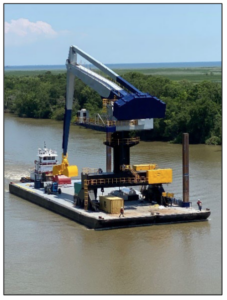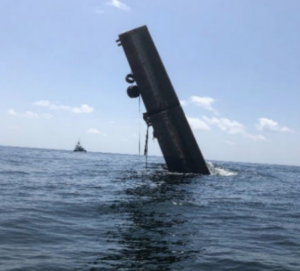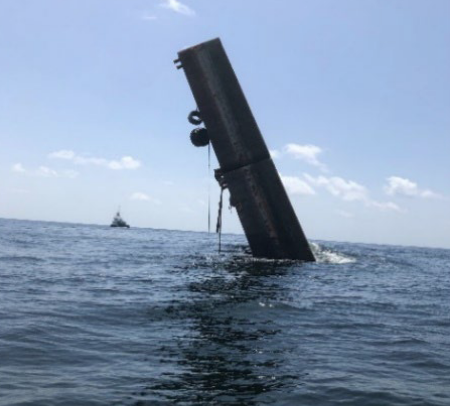(WASHINGTON) — A recent marine casualty resulting in the total loss of a crane barge, estimated at over $6 million, is a stark warning of the risks involved with failing to adhere to load line regulations.
The incident occurred approximately 18 miles offshore of Louisiana in the Gulf of Mexico while the crane barge was being towed in calm weather conditions. The barge was uncertificated without a load line and the operator did not request a single voyage load line (SVLL) exemption from any Coast Guard unit before transiting beyond the Boundary Line.
The Boundary Line is stipulated in 46 CFR Part 7, and non-load line vessels operating outside the Boundary Line are subject to penalties and fines stipulated in 46 USC 5116.


Over the course of the investigation, the Coast Guard discovered major modifications to the barge arrangement and other conditions which compromised its seaworthiness. This would have precluded issuance of a SVLL exemption until corrected.
Additionally, prior to capsizing, the vessel made multiple voyages outside the Boundary Line without a load line, violating U.S. statutory requirements and placing the vessel and crew at risk.
As a reminder, whether inspected or not, most commercial vessels 79 feet and longer are required to have a load line when operating outside the Boundary Line. The Coast Guard strongly recommends that vessel owners and operators (and other relevant stakeholders):
• Review vessel requirements for load lines as specified in 46 Code of Federal Regulations (CFR) Subchapter E parts 41 through 47, and further explained on the Coast Guard’s load line website and load line policy notes. Questions concerning load line requirements can be submitted to the USCG Naval Architecture Division (CG-ENG-2) at HQS-SMB- CGENG@uscg.mil.
• Engage early with local Coast Guard when considering submission for a SVLL exemption. This process is critical for non-load lined vessels to ensure the seaworthiness of the vessel (i.e., condition of the hull, integrity of closures and satisfactory stability) for the duration of the intended voyage.
Marine inspectors, investigators and surveyors are encouraged to maintain an acute awareness to these issues and initiate corrective actions, as needed.
This safety alert is provided for informational purposes only and does not relieve any domestic or international safety, operational, or material requirement. Developed by investigators of Marine Safety Unit Houma and distributed by the Office of Investigations and Analysis. Questions may be sent to HQS-SMB-CGINV@uscg.mil.
– U.S. Coast Guard

